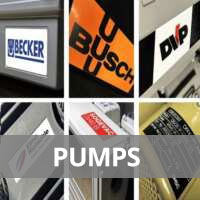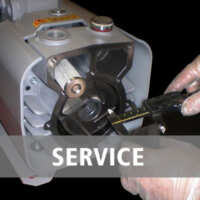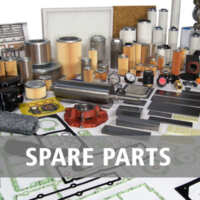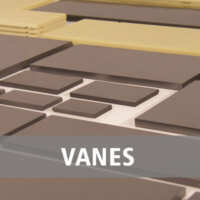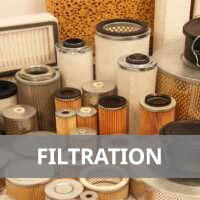Who is VacAir Superstore?
VacAir Superstore has been a leading independent supplier of industrial vacuum and low-pressure products since 1996. We specialize in providing high-quality replacement parts and expert technical support for a wide range of vacuum pumps. With the UK’s largest independent inventory, we offer significant savings on products like vanes, filters, and oil separators.
Why choose VacAir Superstore?
We offer exceptional value without compromising on quality. Our prices are often over 60% cheaper than OEM parts, and we provide a “Price Promise” on our own products. Our extensive stock and expert team ensure you get the right part at a better price, faster.
Where are you located?
Our main location is in Leeds, UK, and features a comprehensive facility including a warehouse, showroom, workshop, and a technical office staffed by experienced professionals ready to assist you.
How can I place an order?
For the best service and to ensure you get the correct part the first time, we prefer a personal approach. You can contact us directly via email, phone, or by visiting our trade counter in Leeds. This allows our technical experts to provide you with the exact solution you need, saving you time and money.
What payment methods do you accept?
We accept all major credit and debit cards, as well as bank transfers. For frequent or bulk orders, we can also set up a credit account.
How fast is your delivery?
We offer various delivery options to meet your needs:
Next-day delivery: We use DHL Express for swift, next-day service throughout the UK.
Specific delivery times: Options for pre-9 a.m. or pre-noon delivery are available.
Urgent same-day delivery: For critical needs, we can arrange same-day delivery.
International shipping: We provide worldwide delivery via DHL Express and can arrange pallet, air, and sea freight for larger international orders.
This section is designed to answer common search queries related to vacuum pump issues, providing immediate, actionable advice.
My vacuum pump is getting hot. Why?
A pump that is running hot can be a sign of a few issues:
Worn out vanes: This is a common cause. Worn vanes create friction, leading to heat buildup and a loss of performance.
Blocked filters: Clogged filters restrict airflow, causing the pump to work harder and generate more heat.
Low or contaminated oil: Insufficient or dirty oil can lead to increased friction and heat. Check your oil levels and quality.
Why is my vacuum pump not producing a vacuum?
A common reason for this is worn-out vanes. When vanes lose their ability to create an effective seal, the pump cannot achieve the required vacuum. This is often an easy fix with replacement parts.
My vacuum pump is making a lot of noise. What’s wrong?
Unusual noise is often a sign of internal wear or damage. This could be due to:
Worn vanes: Loose or broken vanes can create a rattling or scraping noise.
Bearing issues: Faulty bearings can cause a grinding or humming sound.
Contamination: Debris or foreign objects inside the pump can cause significant damage and noise.
A drop in performance is typically a sign that parts are nearing the end of their service life. This can be caused by:
Worn vanes: The most common culprit, leading to reduced vacuum and flow.
Clogged filters: Clogged inlet or exhaust filters restrict air flow and hinder performance.
Oil issues: Old, dirty, or low oil can prevent the pump from operating efficiently.
If you are experiencing any of these issues, please contact our technical department for free, expert advice. We can help you troubleshoot the problem and get the correct replacement parts.
I am text block. Click edit button to change this text. Lorem ipsum dolor sit amet, consectetur adipiscing elit. Ut elit tellus, luctus nec ullamcorper mattis, pulvinar dapibus leo.
Principle of Operation
Dry claw pumps are positive displacement pumps where two synchronised claw shaped rotors counter-rotate within the pumps body.
Working Principle
Inlet (Suction): The two claw rotors, precisely synchronized by timing gears, turn in opposite directions. As the tips of the claws separate, they create an expanding space that draws gas into the pumping chamber through the inlet port.
Trapping and Transport: The gas becomes trapped between the rotating claws and the pump’s housing. As the rotors continue to turn, they transport the trapped gas from the inlet side to the outlet side.
Compression and Outlet: The claws then begin to mesh again, reducing the volume of the trapped gas. This action compresses the gas, which is then discharged through the outlet port.
Maintenance: Because the rotors do not touch each other or the housing, no lubrication is required within the pumping chamber. The precision-machined, non-contact design ensures long-term reliability. The claws are driven by oil lubricated gears enclosed in a sealed housing. Because of the lack of contact within the cylinder body they have a much longer life than traditional pumps and have very little need for maintenance over this extended life.
Principle of Operation
Side-channel blowers, also known as regenerative blowers, are a type of dynamic compressor used for moving large volumes of air at low pressure or vacuum. Unlike positive displacement pumps that trap and compress gas, side-channel blowers use kinetic energy to accelerate the gas.
The Working Principle
The principle of a side-channel blower is based on a rotating impeller with multiple blades located within a circular housing.
Air Intake: Air is drawn into the blower through an inlet port as the impeller rotates.
Kinetic Energy Transfer: The blades of the rotating impeller catch the air and force it outward due to centrifugal force. This action transfers kinetic energy to the air.
Side Channel: As the air is pushed outward, it enters a curved, annular “side channel” that is part of the blower’s housing.
Regenerative Action: The unique design of the side channel redirects the air back to the base of the impeller blades, where it is accelerated again. This regenerative process occurs repeatedly with each impeller blade rotation, building up pressure or vacuum.
Discharge: After multiple passes through the side channel, the air’s velocity and pressure increase significantly. It is then discharged through the outlet port.
A standard side-channel blower has one stage (one impeller), by increasing the number of stages you can further improve performance on pressure and vacuum, although the volume of air moved will be reduced.
Trust VacAir Superstore for all your vacuum pump needs.
Contact us today to learn how we can help you save money and keep your operations running smoothly.




